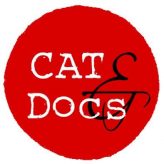
https://www.filmplatform.net/product/better-world
How did two boyhood friends from Midland, Texas wind up arrested on terrorism charges at the 2008 Republican National Convention? Better This World follows the journey of David McKay (22) and Bradley Crowder (23) from political neophytes to accused domestic terrorists with a particular focus on the relationship they develop with a radical activist mentor in the six months leading up to their arrests. A dramatic story of idealism, loyalty, crime and betrayal, Better This World goes to the heart of the War on Terror and its impact on civil liberties and political dissent in post-9/11 America.

Directors’ Statement:
In Jan 2009, The New York Times ran a story about the controversy around the arrest of two young men from Midland, Texas, for the possession of eight Molotov cocktails at the Republican National Convention in Minneapolis-St. Paul. The story immediately captured our imaginations. With the government claiming that David McKay and Bradley Crowder were domestic terrorists intent on murdering or maiming police and Republican delegates and the defense asserting that the boyhood friends were victims of a charismatic radical mentor and an overzealous government, what was the real story?
A dozen phone calls and several days later, we were on a plane to Minneapolis to attend McKay’s federal trial. (Crowder did what nearly all those facing federal charges do – he took a plea.) The odds against McKay were long: the federal conviction rate is easily 90%+. He faced up to 30 years in prison.
We met David McKay at Sherburne County Jail in a prison jumpsuit, hands shackled, the day before his trial was to begin. We arrived with very little idea who McKay was. Walking out six hours later we had begun to understand an idealistic, affable and very frightened McKay… yet many more questions remained unanswered.
Why, we wondered, did the FBI spend more than six months closely following political naïfs with no criminal history? What led these young men to build eight homemade bombs? Did the government save innocent victims from domestic terrorists bent on violence and destruction? Or were Crowder and McKay impressionable disciples set up by dangerous provocateur? Or did the answer lie somewhere in between? With so many questions we were consumed, talking for hours about the characters’ relationships and how their personal experiences illuminated larger national issues and debates. By the time we left the trial and headed back to California we knew we had to make the film.
While our initial intent had been to cover the legal drama, it quickly became clear that a central mystery we wanted to unravel was what had happened between McKay, Crowder, and their radical mentor Brandon Darby from the time they first met at an Austin bookstore up until McKay and Crowders’ arrests more than six months later.
We started piecing the back story together with a range of intriguing archival material: intimate jail house phone calls, audio of FBI interrogations, electrifying archival footage of Darby railing against the government in the wake of Hurricane Katrina, dozens of surveillance photos and video of street battles between protestors and police. We also learned that the Department of Homeland Security had granted $50,000 to the Joint Terrorism Task Force for surveillance cameras at the convention — and that we could access that footage through the Minneapolis police department. We screened hundreds of hours – capturing everything from the FBI following our characters as they arrived in town to McKay and Crowder shopping for bomb making materials to video from Darby’s handheld camera.
Working closely with our editor (Greg O’Toole), graphics designer/producer (Mike Nicholson), composer (Paul Brill) and cinematographer (David Layton) we developed a look, feel and sound for each strand of archival with the broader goal of integrating them in a coherent aesthetic whole. And after gaining the trust of Mckay, Crowder and their families and shooting with them day after day, we were able to capture, verite-style, the intimacy and rawness of their experiences.
It was critical that the audience could feel key events that transpired before we came to the story (the meeting at Ventana del Sol, the van ride up to Minneapolis, the making of the Molotov cocktails . . .) and we were able to bring those moments to life though recreations – footage woven with recollections in interview. (Note to press: Some of our verite scenes have been mistaken for recreations. To be clear, we only recreate past events where we clearly could not have been present… the audience can distinguish these scenes because they are a mixture of treated, impressionistic footage and interview bites cut back and forth. Where we have intimate conversations between characters unfolding before the camera there is no staging or recreating.
Over the two and half years it took to make the film, interviewing FBI agents, attorneys, defendants, family members, jurors and journalists, we were repeatedly surprised by the twists and turns the story took. At several points we were forced to reevaluate our perspectives — debates between us about personal morality and responsibility versus government accountability and meanings of entrapment erupted in the field and the edit room. We learned a lot through the process and committed early on to building the twists, moral ambiguity and big questions we wrestled with into the film for audiences to experience.
Better This World has already inspired intense discussions around the country – encouraging people to grapple with what we see as some of the critical tensions of our time: between civil liberties and security and between democracy and dissent in a post 9/11 world.
– Kelly Duane de la Vega and Katie Galloway